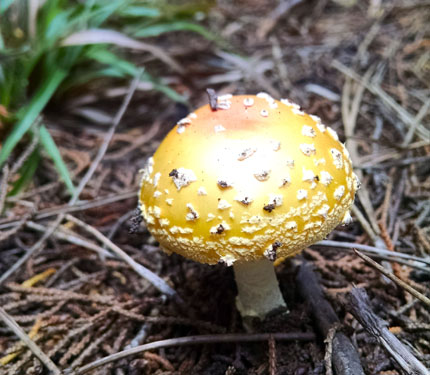Soil Science Society of America
5585 Guilford Road • Madison, WI 53711-5801 • 608-273-8080 • Fax 608-273-2021
www.soils.org
Twitter | Facebook
NEWS RELEASE
Contact: Hanna Jeske, Associate Director of Marketing and Brand Strategy, 608-268-3972, hjeske@sciencesocieties.org
What’s the largest terrestrial organism?
Dec. 1, 2017 – The Giant Sequoya? Nope. The African elephant? Not even close. The Soil Science Society of America (SSSA) December 1 Soils Matter blog post shares that the largest land organism is—a fungus!
 Those who know soil understand the biodiversity lurking within. And that includes the honey fungus, the largest terrestrial organism.
Those who know soil understand the biodiversity lurking within. And that includes the honey fungus, the largest terrestrial organism.
The largest honey fungus identified in North America is in Oregon. It measures 3.4 miles across! Scientists also believe that this particular honey fungus may be over 2,000 years old. The next largest honey fungus is in the neighboring state of Washington.
The honey fungus gets its size from its ability to fuse into a single organism. Soil scientist Jesse Morrison, from Mississippi State University, explains: “When mycelia from different individual honey fungus bodies meet, either in or on the soil surface, they can attempt to fuse to each other. The fungi must be genetically identical honey fungi. When the mycelia successfully fuse to each other, they link very large fungal bodies together. This, in turn, changes extensive networks of fungal ‘clones’ into a single individual.”
To read the entire blog post, visit https://soilsmatter.wordpress.com/2017/12/01/whats-the-larges…estrial-organism/.
Follow SSSA on Facebook at https://www.facebook.com/SSSA.soils, Twitter at SSSA_Soils. SSSA has soils information on www.soils.org/discover-soils, for teachers at www.soils4teachers.org, and for students through 12th grade, www.soils4kids.org.